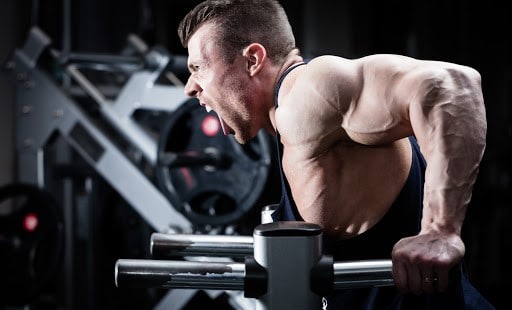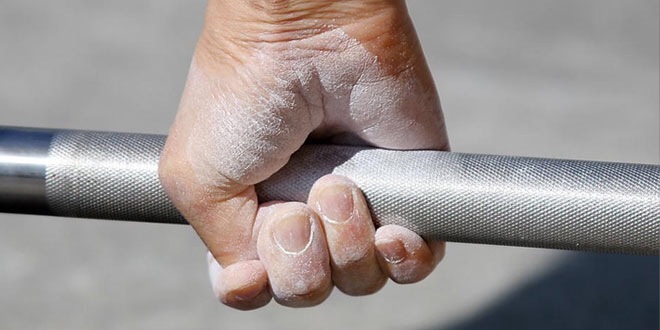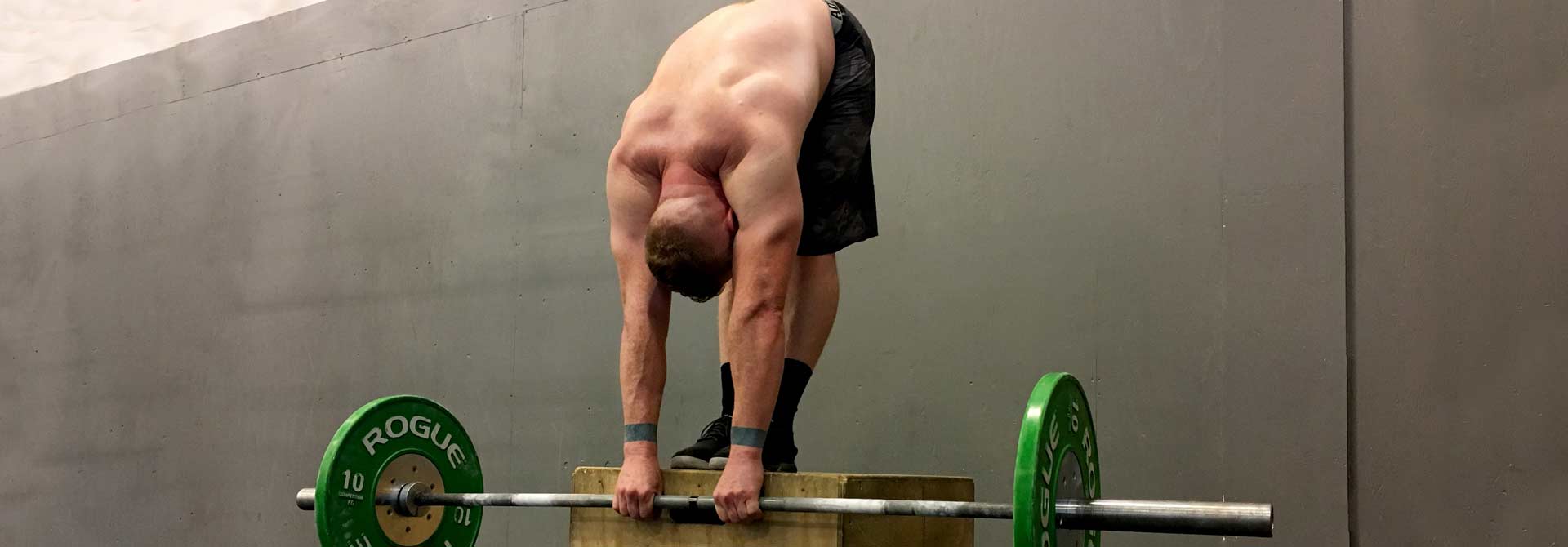Lifters either have a love or hate relationship with the bench press. Some people are gifted with the leverages and natural strength needed to press big weight. Others languish under the bar and curse the lift as their absolute worst. While it’s possible to have a “poverty squat” and a “poverty deadlift”, you’re much more likely to struggle with a poverty bench. For many lifters, the answer for a bigger and better bench is to bench more often and eat more food. But after a certain point, these two simple answers simply won’t cut it. You need accessory exercises for the bench press.
Any pressing movement can be one of many effective accessory exercises for the bench press. But to make the most progress, you need to identify movements that specifically cater to your weakness. Just as with the squat and deadlift, accessory exercises for the bench press need to be tailored to you. Some accessories are universally useful and will pay big dividends regardless of how you press, but some are more niche and will be of greater benefit when you can figure out exactly where you struggle the most in your press. The common weaknesses to consider in the bench press include:
- The pecs. I’d argue most people don’t fail their bench press because of a weak chest, but it does happen. This is going to be more common if you happen to fail towards the very start of the lift (barbell won’t budge off the chest) or within the midrange (where the press usually halts to a grinding stop for most people at max loads).
- The anterior delts. The anterior (front-facing) portion of your shoulder muscles is loaded the most at the very bottom of the lift when the stretch through the shoulder is at its peak and your shoulders have to exert the most force to help the lift. The force your shoulders contribute to the lift drops off as the lift approaches lockout, and the bar makes its way to the starting position. Being weak off the bottom can suggest weak shoulders.
- The triceps. The triceps contribute the most to the overall lift and are taxed more than any other muscle group in the upper body when bench pressing. While a strong chest is important to get the bar off the body, your pecs have an early upper limit when it comes to how much they contribute to the bench press, and it is a pair of stronger triceps that lead to bigger bench pressing. Hammer them as often and as heavy as you can.
- Poor setup. The bench press is a very technical lift, and there’s a lot that can go wrong. You may not be “bending the bar” enough after unracking. Additionally, you may be forgetting to internally rotate the shoulders and flare the elbows during the press. You may not be staying tight and maintaining your arch through proper foot stance and leg drive. Your bar path may be all over the place and wildly inefficient, making it impossible for your muscles to properly translate force into a good lift. While poor setup can lead to failure in the deadlift and squat, it’s infinitely easier to grind these out than it is to grind out a bad bench.
Bench Pressing is Pretty Complicated
I’m going to take the time to dedicate this portion of the article specifically to reiterate how important it is to nail your setup when looking for ways to improve on the bench press. If you’re confident and comfortable in your bench press, and if you’ve learned how to properly arch, maintain tightness, translate leg drive into a big chest/stomach, and know how to lower and press the bar optimally (externally rotating your elbows as the bar comes down and internally rotating them as you drive it up into the heavens), then this reminder won’t matter to you.
But if you’re a beginner, please remember
that even the most effective accessory exercises for bench pressing can’t fix
what ultimately comes down to poor technique and lack of consistency. Bench
press often (start with 2-3 times a week) at varying intensities and rep
ranges, take videos of your form, note your progress, and start focusing on
accessories and sticking points when every rep and set is starting to look the
same across every workout, without major inefficiencies and varying bar path. A
quick checklist for beginner and intermediate lifters:
- Learn to arch properly. Get your shoulders set up so your scapulae are retracted (and depressed, if possible). Not only does this save your shoulders, but a bigger arch means you get to minimize the distance the bar has to travel.
- Press through the heels into your upper back. If you’re slipping and sliding, get a better bench or place a grippy yoga mat under you when you’re pressing (it really works). You want your quads to be engaged and pressing throughout the entirety of the lift, keeping your arch big.
- Learn to brace for the bench. This will give you a lot of extra stability under a heavy weight, but it’s also going to further reduce the range of motion by bringing your chest up just a little higher.
- Get a comfortable grip. Some people bench fairly close, others go really wide. It’s up to you to figure out what feels strongest. Also, squeeze the bar really, really tight. Choke it if that’s your thing. This will also improve stability a lot.
- Position yourself so the bar starts off in the rack at roughly mouth height. This is to help you reduce the possibility of losing your shoulder tightness during the unrack. You shouldn’t have to move the bar out of the rack more than a few inches.
- Bend the bar as it’s coming down towards you and bring your chest up to meet it. Some people prefer to let the bar sink in, while others want to minimize the range of motion with a slight touch. Then press and flare (not wildly, just enough to get your elbows pointing slightly more away from you) and push the bar back into the position it was after you unracked.
Once you’re sure you’re implementing this
checklist properly, and with consistent results, it’s time to address the next
big challenge: getting stronger, bigger, and better at benching.
Bench Press Variation Accessories
The best way to train the bench press is to bench press more often, to begin with. For me, the bench press has always reacted best to a lot of volume. If I try to program bench pressing into my week at a frequency of 3-4 times and do a ton of back work, supination exercises, and rear delt isolation, I usually end up with a nice jump in my bench.
However, there are plenty of accessory exercises for the bench press that you can use when working with such a bench frequency, so you aren’t just hitting the competition bench four times a week. That’s usually a pretty good plan for a short-term jump in gains, but you make more long-term progress by training through your weaknesses with a more targeted approach. A couple of useful and effective accessory exercises for the bench press include:
- Close grip bench presses. Probably my favorite bench press accessory. It’s simple and to the point. It’s also probably the best bang-for-buck direct triceps work you do for a bigger bench aside from weighted dips, which are similarly valuable (but these are a little more bench press-specific). Nothing about these is rocket science – just grip the bar a little closer than you otherwise would (not with your index fingers touching, but roughly shoulder width) and press.
- Spoto presses. Spoto presses are paused bench presses with the weight stopped about an inch above your chest. It’s like doing competition presses but you’re hovering the bar instead of letting it touch your chest. This reduces the stretch you get at the bottom of the lift and instead forces you to maintain greater tension and work through the portion of the lift that’s hardest (the middle part).
- Pin presses. As an alternative to the board press, which still requires you to maintain tightness and hold the weight up at the bottom of the lift, a pin press allows you to lay the weight down on the pins entirely. This takes all the tension out of the lift, requiring you to get tight and press from a dead stop. Set the pins below your current sticking point, so you can work on powering through it.
- Banded and chained presses. You can do these for singles, triples, heavy sets of five, or speed work for sets of eight and above. They’re versatile and tough. The point behind a banded or chained press is variable loads – the weight is lighter off your chest and gets heavier the closer you are to lockout. It’s not effective for targeting weakness around the bottom of the lift but helps you emphasize speeding through your sticking points (explosiveness) and trains the lockout. It’s also a way for you to work up to a heavy PR that feels lighter off the chest, so you know what it’s like to lock it out.
Overload Bench Press Accessories
Every now and again, it serves a lifter
well to work on overloading their lifts, so they get a feel for a weight before
they have to move it throughout an entire range of motion. I personally find it
important never to specifically “train” these lifts. These are accessories that
are meant to give you a psychological boost, first and foremost – they let you
move weight you wouldn’t be able to safely move throughout a lift’s full range
of motion in order to get a feel for what that weight would feel like in your
hands. My personal picks for effective accessory exercises for the bench press
when you need to get heavy include:
- Board presses. You can use blocks of boards, and I’ve even used a foam roller at one point just to get these to work. Start with 2”-3” block or board. You can use larger blocks, but at a certain point, you really aren’t making much use of the exercise. Don’t overload this too much – use it to feel out heavy PRs and/or training maxes a week or two before you’re scheduled to give them a try.
- Heavy holds. Heavy holds are the best way to prepare yourself for a weight that might otherwise become a mental block. When bench pressing, even more so than in the squat or deadlift, it’s very easy to unrack a PR for the first time and suddenly feel real fear that you won’t be able to complete the lift. With that fear in your mind, you most certainly will be handicapped. A heavy hold lets you unrack and feel the PR before you need to move it, and you can overload this movement by a good 5-10%.
- High pin presses. This is set up just like a pin press but with the pins closer to lockout. Unlike a board press, you no longer feel the weight when it hits the pins. This requires you to get tight and press hard to get it off the pins. High pin presses are great for practicing your lockout, but again, this isn’t a movement I’d train regularly. It’s good for feeling out a scary PR safely.
Targeted Bench Press Accessories
- Pec flies. Direct chest work is still very valuable when training the bench press. You can use dumbbells, cables, chains, bands – whatever you end up using, be sure to hit these once or twice a week on your hypertrophy days and go for high reps, and one set to failure. It’s all about the pump with these.
- Tricep isolation. Again, so many choices to go for here. Pushdowns, extensions, cable work, dumbbell work, bands, drop sets, single-arm work, and so on. I usually end up picking a different set of tricep exercises every cycle or so, going through my favorites and hammering them hard.
- Overhead presses. Front raises do well to target your anterior delts as well, but overhead presses let you really focus on the pressing part of the action. You can go for heavy presses on a stark incline too, especially if you need additional work on the upper pec. You can do them seated, standing, with dumbbells or with a barbell.
- Lateral raises. Your medial deltoids can’t be ignored in a crucial time such as this, and lateral raises are the best, easiest, and quickest way to hammer them. Again, countless variations here. You can mix and match or stick to the one you like best. Cables, leaning, one-armed raises, raises with plates, old-fashioned dumbbell raises, raises with extra shoulder rotation and a slight lean, and so on and so forth.
- Rear delt isolation. Face pulls, pull aparts, and cable flies work best here for me. If you’re new to rear delt isolation, it may take some time for you to figure out how to properly isolate the back part of your shoulder without turning it into a rhomboid or trap exercise. An important tip – start light and go slow. Internal shoulder rotation also helps isolate the rear delts more.
- Heavy rows. Bigger lats don’t directly contribute to a bigger bench press, but a thicker back provides more stability and helps cut your range of motion. Aim to row your bench with ease, or row half of your deadlift for reps (as a goal). Thick rows also contribute to a better deadlift and squat, so you should be doing these anyway.
- Hammer and barbell curls. Work that directly strengthens the supinating muscles in the forearms and provides you with thicker biceps and brachialis muscles can help provide greater stability at the bottom of the bench press and reduce elbow tendonitis from doing a whole lot of pronated pressing and very little supinated pulling.
The bench press may be the ultimate bro lift, but it takes a lot of brains to effectively program accessories that cater to your needs, and there are more than 14 effective accessory exercises for the bench press out there. These happen to be the accessories I would pick, but I’d love to hear more about how you pick your accessories down in the comments. If you need help with accessories for the squat or deadlift, I’ve got you covered.




